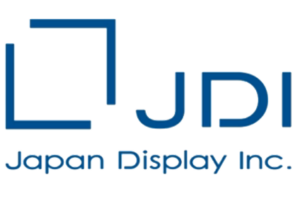The last week has been a very interesting one for Japan Display Inc (JDI). First they released their quarterly results (not so great), then they announced a cooperation with E Ink to develop electrophoretic display-based signage and to top off the news cycle, Reuters reports on a potential bail out of ¥75 billion ($685 million) and the firing of 30% of its staff. If this doesn’t make for an interesting week, I don’t know what does.
The quarterly results showed a decrease of 27% for the six months ending on September 30, 2016. In the same time period they saw a loss of their comprehensive income of ¥21.7 billion ($198 million) (compared to a loss of ¥1.7 billion ($15 million) in the year before). As an item of, relatively, good news they expect the sales decrease to soften to just under 22% for the nine months ending in December 31, 2016. This means that they must have some solid orders for the current quarter.
In the Reuters report they mention that the downturn was due to slower sales of iPhone displays, a very interesting statement considering that the third quarter of 2016 (The fourth quarter in Apple’s FY) showed some return to strength in iPhone sales, even though unit sales dropped 5% YoY at Apple. This does not match up to the sales drop at JDI though. One has to wonder if Apple shifted display sales away from JDI as well as seeing weaker sales figures. In addition the iPhone 7 only reached the market in September and had very little impact on the overall Apple sales figures.
If you think that the increased sales number for the iPhone 7 must be the driver behind the increased JDI sales expectations for the current quarter, you may be wrong, as Reuters says that the demand comes ‘from Chinese smartphone makers’. This is a very confusing situation that may hint at a shift in supply for Apple’s latest smartphone display panels.
As a consequence of the poor results, JDI will be firing 30% or 4,700 people from its workforce. This is a drastic measure by any means and it would be interesting to see how these positions are distributed within the company.
In addition, the Innovation Network Corp of Japan (INCJ), a government-backed fund is in talks with JDI to provide capital in the order of ¥75 billion ($685 million) to improve their cash position. One can imagine that the plan for such a workforce reduction did not come entirely from JDI alone, but may be a concession for the increase in its capital. With a current loss of over ¥21 billion ($198 million) per quarter this will give JDI just under a year to turn their business around. With increasing sales and a better profitability the money could be used to accelerate the development of OLED panels as discussed below. In addition, Reuters mentions also talks to Japanese banks to improve their cash position even further. JDI could become the first victim of an over dependence on smartphone displays even if they are a big player and a supplier to a market leader. This does not paint a great picture for JDI in case Apple does decide, as many believe it will, to use AMOLED displays in future iPhone models.
Besides their position as a leading automotive display supplier, JDI is also trying to make more inroads into digital signage displays. This is where the announcement of a cooperation with E-Ink fits in seamlessly. “I am pleased to start a strategic alliance with E Ink which owns unique electrophoretic technology. I expect to create new markets through the combination of JDI’s backplane technologies and electronic ink technology. Adding electronic ink technology to our growing LCD technology and developing AMOLED technology, I believe that JDI can make its product line-up stronger and proceed to diversify its business portfolio.” said Mitsuru Homma, Chairman and CEO of Japan Display Inc.
Analyst Comment
It seems a little farfetched to see this “strategy alliance” as a way to solve JDI’s dependence on their LCD business. A small help to create some profitable business maybe, but not a real solution to the their systemic problem of being just a LCD supplier for small size displays. Their development of OLED displays will take time and it took Samsung and LG a multiple of the ¥75 billion that is being discussed as a capital influx for JDI. This makes me believe that this is not the last time we will hear from JDI and increased capital requirements to keep this Japanese panel maker on the map and become a player in the OLED display business. (NH)
I’ve heard (and believe) that, initially, Apple will only move part of its iPhone line to OLED, partly because it simply can’t get enough flexible AMOLEDs in the short term. (BR)

